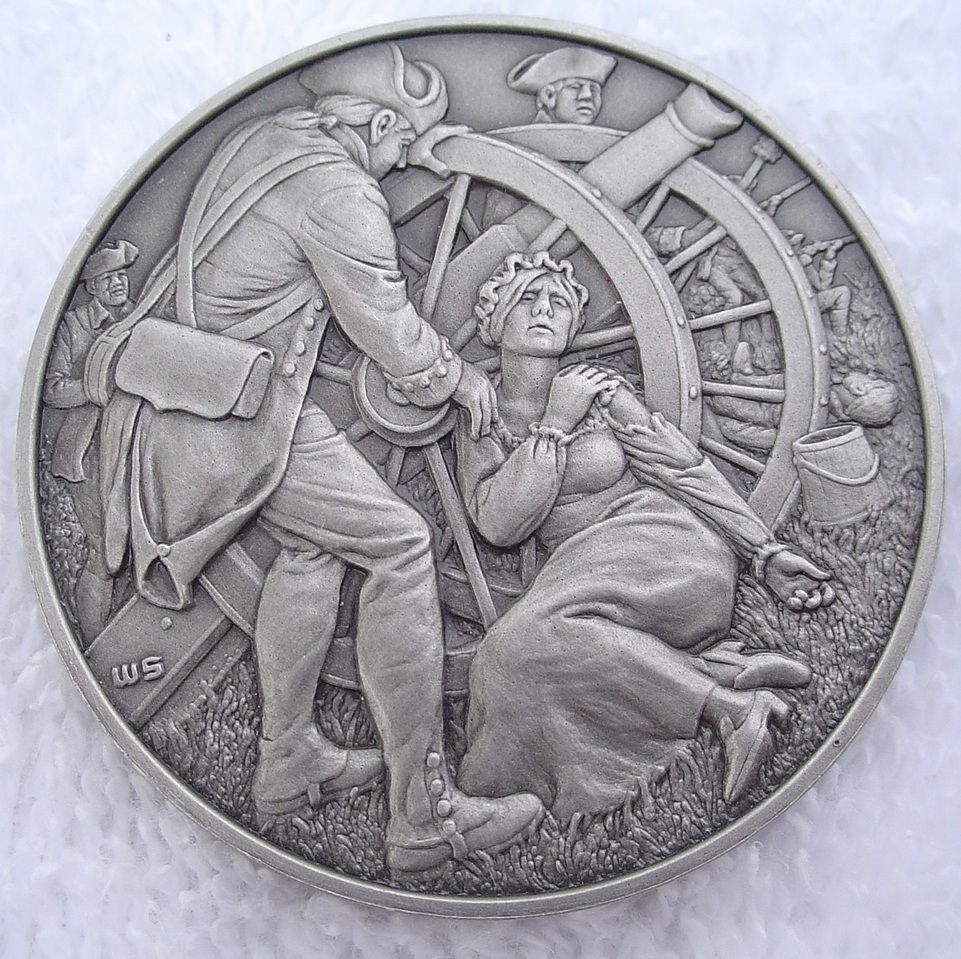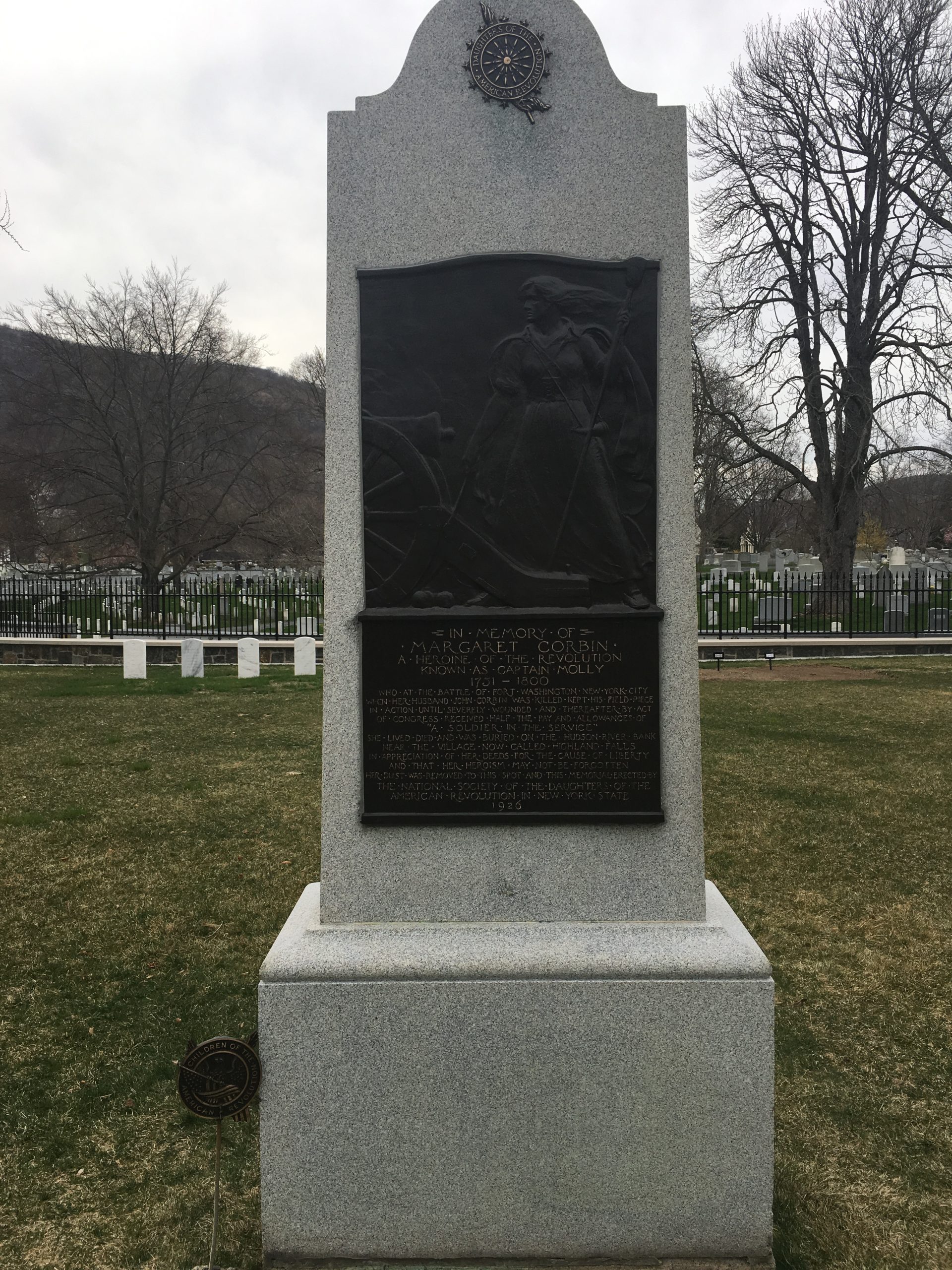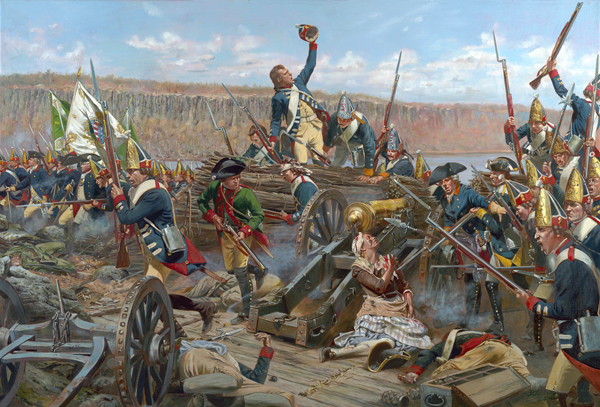When John left for war, Margaret accompanied his regiment as a camp follower likely helping to cook, do laundry and nurse wounded soldiers.
But her duties soon exceeded those common tasks of the camp wives. While they were stationed in Fort Washington, New York, on November 16, 1776, the fort was attacked by British and Hessian troops. During the battle, as others were dying around them, Margaret assisted her husband as he took charge of the cannon. When John died in action by her side, Margaret took his place on the firing line and continued to work the artillery without any time to mourn, until she was severely wounded. She was captured by the British following the battle but soon paroled and assigned to the Corps of Invalids at West Point.
We know of Margaret’s significant action at the battle as a combatant based on details from a Congressional resolution dated July 6, 1799. It was at that time that officers from her regiment successfully petitioned Continental Congress on her behalf and it was resolved that Margaret receive compensation for her service, making her the first woman to be awarded a lifelong pension from the United States for her military service.
Her wounds were so severe that she likely lost use of her arm and had to live with caregivers for the rest of her life due to her debilitating injuries. Margaret died at the age of 48 in 1800 in Highland Falls, New York, about three miles south of West Point. A monument erected in 1926 in the West Point Cemetery is the only monument to a woman veteran within the United States Military Academy.





